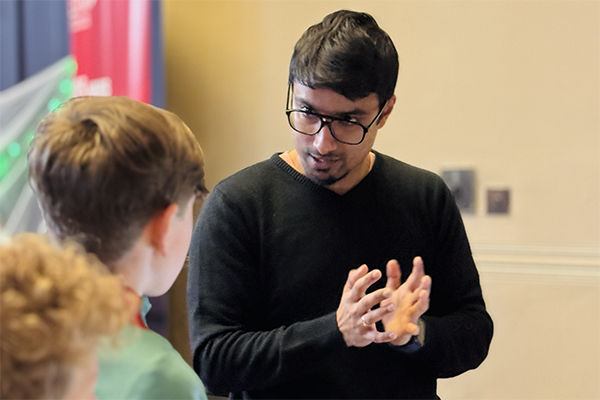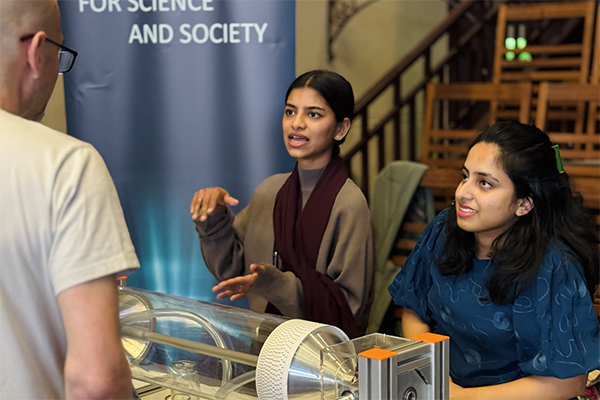QUASARs attend British Science Week event

Last week was British Science Week and the theme this year was ‘Change and Adapt.’ Like many technologies particle accelerators have continued to change and adapt throughout the years with modern versions of such machines being very different to the originals.
Early particle accelerators were often electrostatic accelerators. There is a limit to the voltage which can be generated in such machines and consequently this limits the particle energy which can be achieved. The need to accelerate particles to higher energies was overcome by using electrodynamic (electromagnetic) accelerators. These have become larger over time as higher energies have been needed in order to carry out the desired research. This research includes probing the fundamental particles of nature and has resulted in machines like the Large Hadron Collider. However, there is a limit to how big such machines can become. To overcome this a new technique of acceleration called plasma wakefield acceleration is being developed to allow particles to be accelerated to high energies over relatively short distances.
The AWAKE project is one such example of this technological development. AWAKE investigates the use of plasma wakefields driven by a proton bunch to accelerate charged particles. Using this technique electrons can be accelerated to GeV energies over distances of only tens of metres.

PhD students Farhana Thesni Mada Parambil and Sruthy Chandran during the event.
Three members of the QUASAR Group attended an event at the Victoria Galleries and Museum as part of British Science Week. The event was for families to drop in and talk to researchers about the work they do at the University of Liverpool. Around 200 people attended the event over the course of the day. They were treated to a demonstration of the Surfatron, a demonstration of how electromagnetic waves accelerate particles. They were also shown how particles can collide either with a fixed target or with each other to create new particles whose properties, such as their energy, can be measured.
The QUASAR team was led by Debdeep Ghosal, a Research Associate in the QUASAR Group, who works on beam diagnostics for the AWAKE experiment. He said “It was incredibly rewarding to see so many families including the children and young students engaging with the fundamental principles and wonders of accelerator science. British Science Week provided a fantastic platform to share our passion to the public in an accessible way and inspire the next generation of scientists and engineers. The level of curiosity and the insightful questions/discussions we received were truly inspiring”
Also attending was Sruthy Chandran, a PhD student in the QUASAR group, who works on the AEgIS experiment at CERN. She said “it was a great opportunity to give the public insight into accelerator physics as a field and the fact that people actively work in it for fundamental understanding and advancements. Many attendees came from non-scientific backgrounds and, though they were aware of CERN and its controversies, they didn’t fully understand the significance of accelerators or the different approaches in the field. I hope the event helped bridge that gap, even a little. It was also a valuable learning experience for me, especially in communicating complex ideas to non-scientists and young children.”
The final team member was Farhana Thesni Mada Parambil, a PhD student in the QUASAR Group and a fellow in the EuPRAXIA Doctoral Network. She said “Being part of the British Science Week event was an amazing experience! It was wonderful to see so many people, especially kids, getting curious about particle accelerators and how they work. I really enjoyed answering their questions and seeing their excitement as they watched the Surfatron demo in action. It’s always rewarding to share our research in a way that’s both fun and accessible. Events like these reinforce the importance of science communication—it's all about inspiring the next generation and showcasing how science is constantly evolving.”